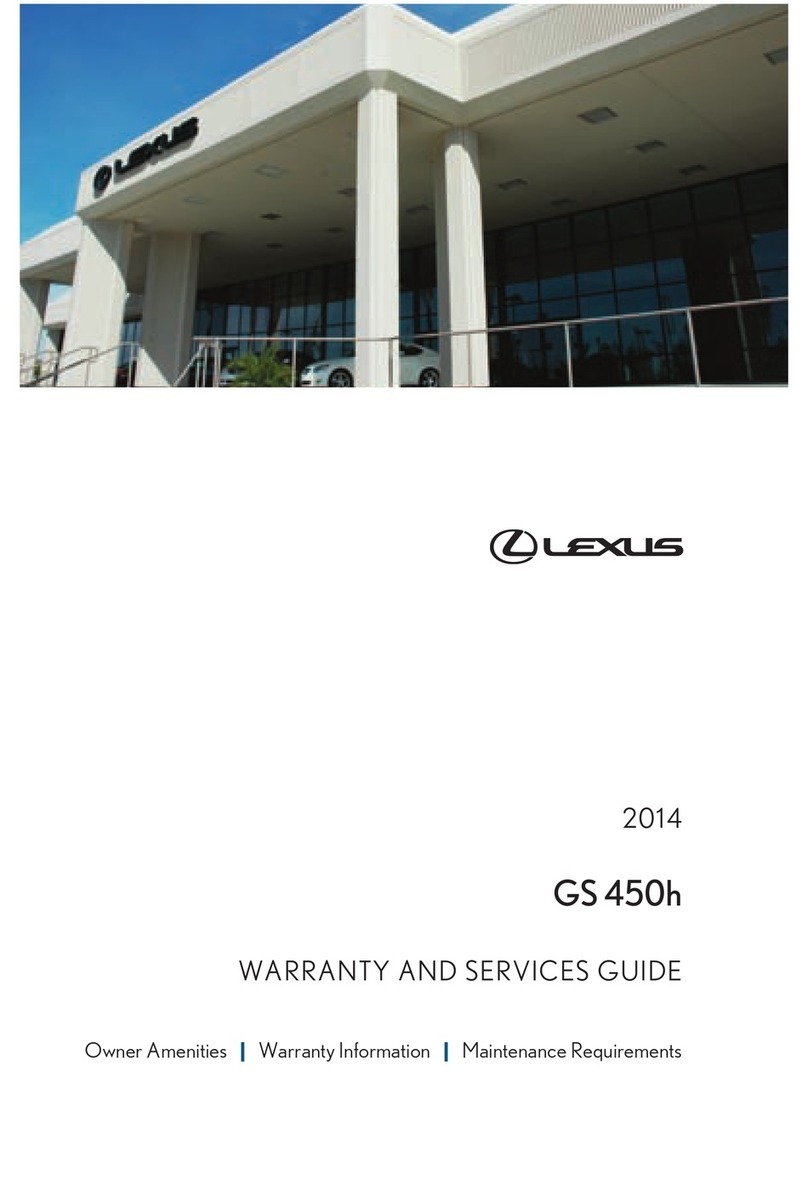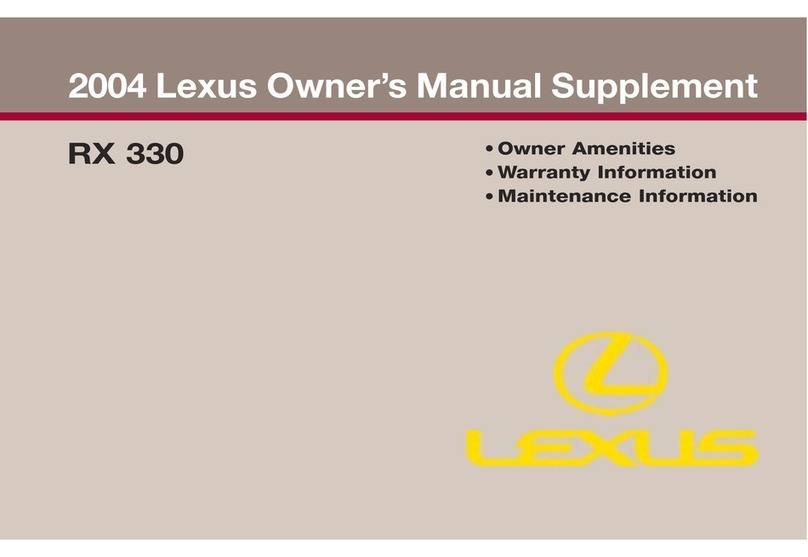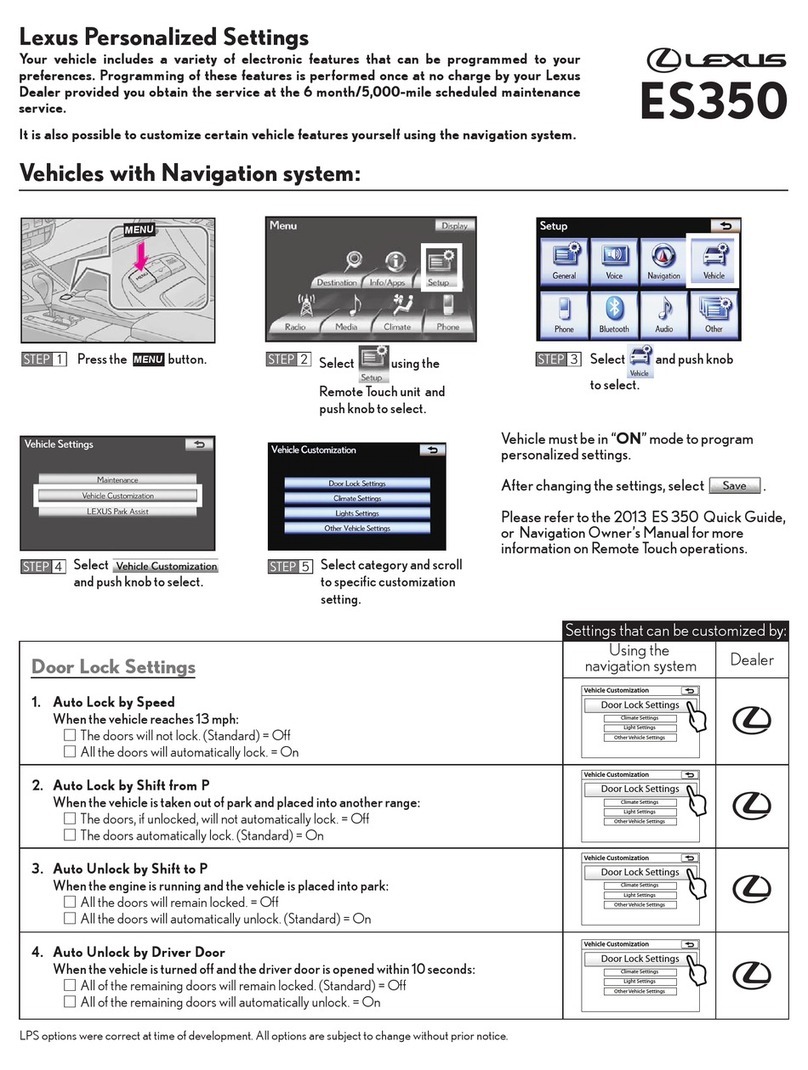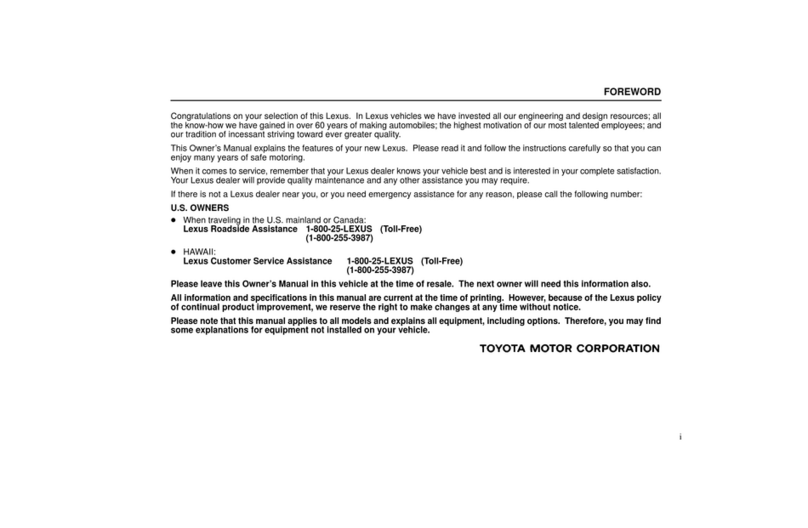
AAA Towing and Roadside Assistance Guide for Lexus LFA
January 4, 2011
Updated February 28, 2011
GENERAL VEHICLE INFORMATION
SPECIAL PRECAUTIONS:
•Lexus LFA vehicles use unique construction techniques and materials. Most of
the body and chassis is constructed of aluminum or carbon fiber reinforced
plastic. The result is a vehicle that is light weight but requires special handling.
•Lexus LFA vehicles use a specifically designed 4.8L V-10 engine mounted under
the hood coupled to a 6 speed automated sequential gearbox mounted in the rear
of the car to provide weight balance.
•Car carrier equipment is the only authorized methods of towing this vehicle. Due
to the low profile of the vehicle and the unique construction components utilized
to build this vehicle, additional ramping, care and time must be used when
transporting.
•When loading or pulling the Lexus LFA, DO NOT USE HOOKS OF ANY TYPE
ON THE LOWER CONTROL ARMS OR ANY OTHER STEERING OR
SUSPENSION COMPONENT. Follow only the approved loading procedures
specified in the following pages.
•USE ONLY WHEEL STRAP TIE DOWNS to secure this vehicle when
transporting. The use of chains or hooks will damage under vehicle components.
•There is no override provision to get the transmission in a Lexus LFA into Neutral
should there be a failure in the shifting mechanism.
•In an emergency situation where the vehicle will not roll or must be moved for
towing access, wheel-jacking equipment, such as GoJaks are recommended. Due
to the limited ground clearance of this vehicle, some models of GoJaks may not
fit. It is recommended that GoJak model 4500 be used. Use care and caution
when installing GoJaks on this vehicle.
•When parking this vehicle ensure that the transmission is in First or Reverse and
the parking brake is properly set. This vehicle uses a paddle shifted sequential
manual transmission and an electronically applied parking brake. The proper
operation of these components is discussed in detail in this service guide.



















































